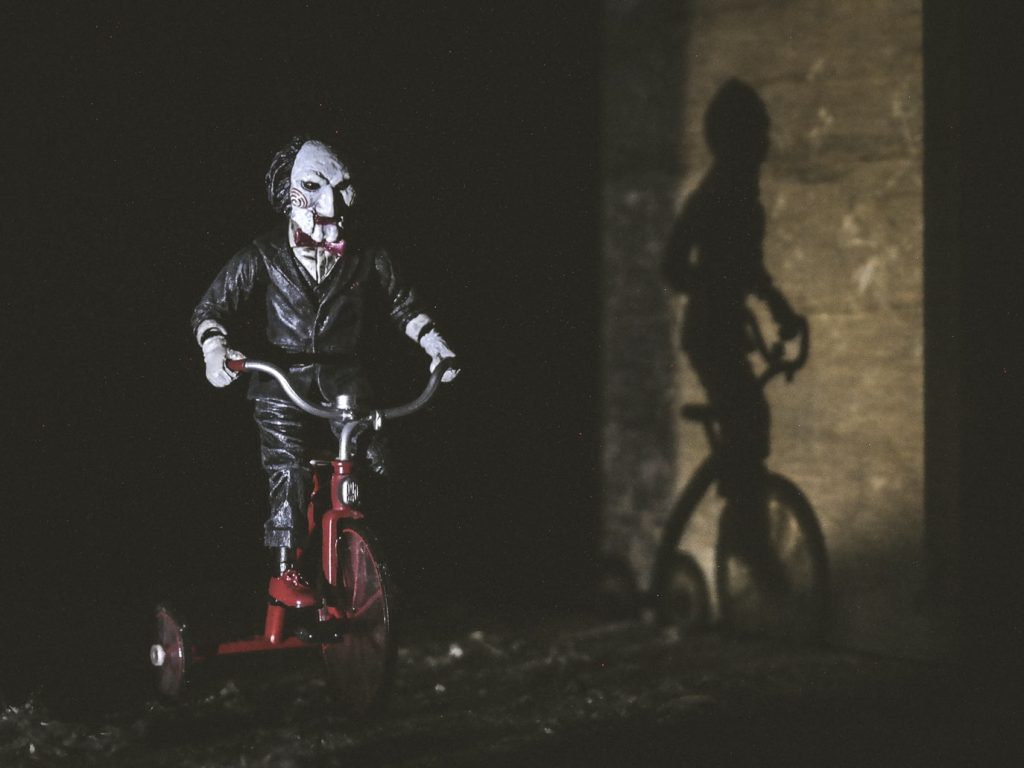Film has always been a reflection of our society. When world events occur or certain beliefs become widespread, they naturally shape our perspectives and, in conjunction, the stories we seek or tell. The genre of horror specifically reflects the fears and anxieties our society holds. From the escapist stories of early horror to the macabre movies of the 70s, the world’s best horror classics wouldn’t exist without the influence of unnerving current events. Let’s journey through the history of horror and how the genre has evolved with our society.
Early Horror: Folklore Becomes Film
While horror has always been a dark genre, early horror films from the 1900’s to 1940’s were far from the intense, heart-thumping movies we see today. Classics from this period — including Frankenstein, and Dr. Jekyll and Mr. Hyde — told supernatural stories that often featured monsters, devils, and ghosts. Many films in the early days of horror were removed from reality. Major conflicts like World War I and the Great Depression led to a need for escapism and a more palatable outlet for our fears. As seen in films like Dracula, which starred a somewhat sultry villain, early horror focused less on reality and more on folklore and religious taboos.
50s and 60s: Horror Explores Reality
The 1950s were the start of a shift toward more realistic movies in the horror genre. Following a terrifying, gruesome second world war and a rising Cold War, audiences weren’t as thrilled by fantasy-based horror. Rather, they began to fear the repercussions of technological advancements and other aspects of reality. This brought the rise of science-fiction and psychological horror thrillers like Psycho and Rosemary’s Baby. This era of the horror genre also marked the growth of a specific subset of science-fiction horror that focused on aliens, as seen in movies like The Thing From Another World, due to the beginning of widespread rumors of UFO sightings. Alien movies were particularly prevalent in this period — though space and alien themes are still persistent today. As developments pioneered by NASA and SpaceX, such as robot insect droids, blur the line between fact and fiction, horror will continue to expand on this popular 50s and 60s theme, adapting to new discoveries, as seen in more modern films like Body Snatchers.
70s and 80s: Darkness and Violence Rise
As the U.S. experienced a surge in violent crime alongside the aftermath of the Vietnam War, many gruesome details of which were aired on TV, horror became darker and more reality-based. Slasher films reflected the societal fear of horror entering otherwise idyllic situations — for example, with Friday the 13th bringing a murderer to summer camp and The Shining bringing darkness to a hotel set in a beautiful landscape. This era of horror also saw a rise in films that dealt with the unknown, like with Alien and Jaws investigating space and ocean depths that remained unexplored. Fear of widespread declines in Christian morals also inspired classic films like The Exorcist and The Omen.
90s and 2000s: New Horror Culture Takes Shape
Perhaps one of the biggest testaments to the fact that horror reflects societal fears is the fact that the 90s and early 00s largely saw a slowdown in horror hits. As global conflicts became less prominent than the previous war-impacted years, slasher franchises weren’t thriving as much as before. This era didn’t see any strong themes, though remakes were common. Rather, the occasional horror franchise made it big due to its divergence from the norm. Scream became an instant classic in meta-horror, while flicks like Ring and The Blair Witch Project put a fresh spin on the occult. However, as people began to recover from the shock over the September 11 attacks, the 2000s became more defined by a pessimistic and anxious attitude toward the future. Extra-violent films coined as “torture porn” (like Saw and Wolf Creek) became prominent. Similarly, apocalyptic films became smash hits. Although bioengineering has proven to be a beneficial mainstay in our society, it was once a scary concept that led to genre-defining zombie films like 28 Days Later. Its legacy could even see more horror genres developing around it.
Modern Horror: The Villain Isn’t So Clear
As fear of major conflicts like world wars continue to subside, horror movie heroes are no longer facing monsters or murderers. Reflecting more prevalent fears of the 2010s and 2020s (like social injustices, fake news, and cyberattacks) horror movies are more frequently tackling unclear villains and enemies without a physical form. For example Get Out and Parasite tackle social themes head-on. Horror movies have also become more unexpected, with more psychological and genre-bending elements, as well as advancing visuals.
Horror is Ever-Evolving
As new global issues take shape, we can expect to see the genre of horror reflecting them more intensely. Following the global pandemic and issues like insomnia, anxiety, and depression that were heightened by COVID-19, a new wave of horror may reflect changes in individual anxieties and social dynamics. And as societal divisions and systemic issues take the spotlight, horror movies will change, too. What are your thoughts on horror through the decades? What do you think the next big trend will be? Do let us know in the comments below, we’d love to hear from you!
You can check out more of our thought provoking articles here!
